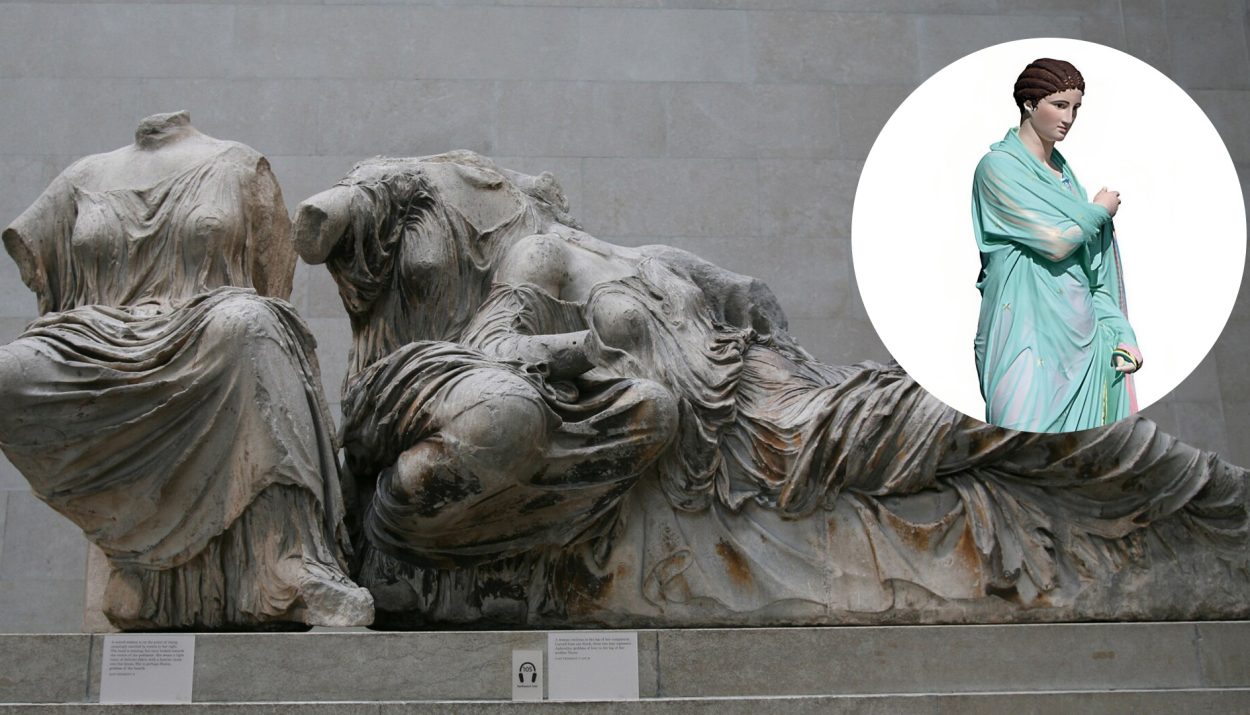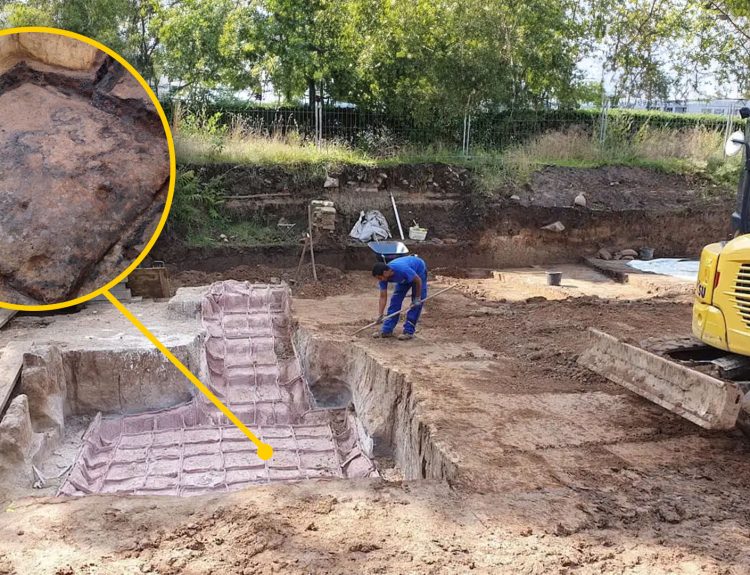Imagine standing in the presence of the Parthenon sculptures, those emblems of ancient artistry housed in the British Museum. For years, these statues have been the epitome of classical beauty-pristine, white, and seemingly unblemished by time.
Yet, what if the narrative of their pure marble aesthetic was only a fraction of their true story? Recent findings are about to redefine your encounter with these ancient masterpieces, inviting you to visualize a past far more vibrant than the monochrome figures you’ve known.
Heart of the Revelation
As you delve into the heart of this revelation, prepare to be transported back to the mid-5th century B.C., where the Acropolis of Athens stood as a testament to human craftsmanship and divine reverence.
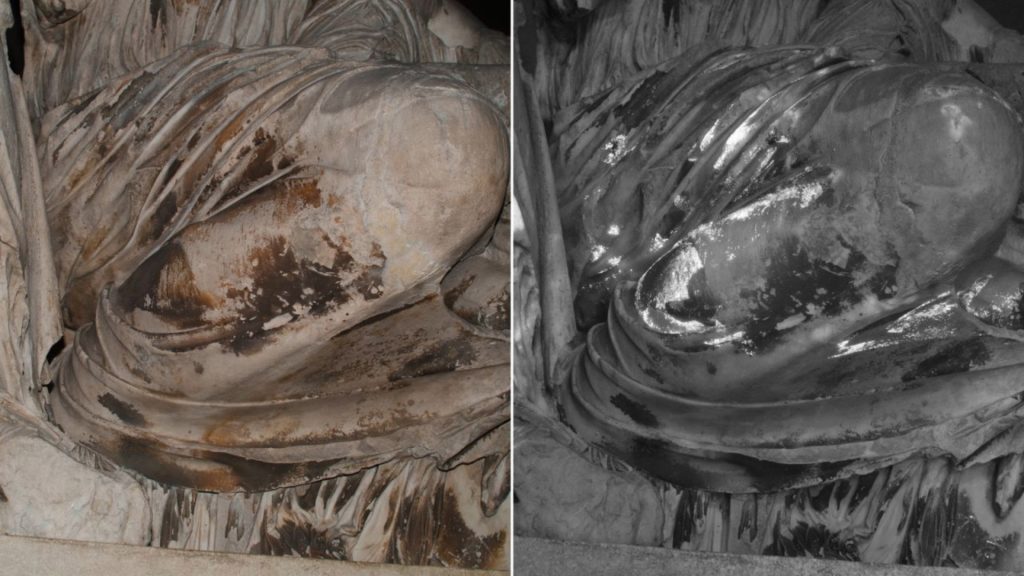
The Parthenon, dedicated to Athena, was not just a structure of marble and stone but a canvas of color, alive and resonant with the hues of a civilization that embraced the full spectrum of life. Join us on this fascinating journey of rediscovery as we peel back centuries of assumptions to unveil the true colors of the Parthenon sculptures.
Discovering a Colorful Past
The white brilliance of the Elgin Marbles, as the Parthenon Sculptures are sometimes known, has long been celebrated. Their lack of color is considered a hallmark of their refined artistry. But the whispers of the past speak of a different truth, one that remained hidden until a team of experts from King’s College, the British Museum, and the Art Institute of Chicago embarked on an unprecedented investigation. Their mission is to unravel the color secrets of these ancient sculptures using cutting-edge digital imaging techniques.
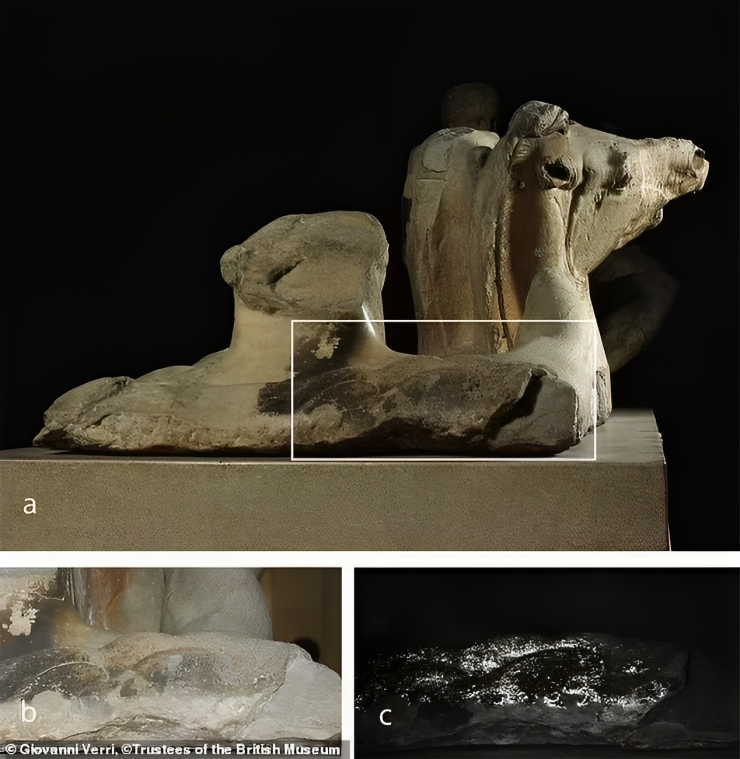
Utilizing non-invasive methods such as visible-induced luminescence imaging, the researchers meticulously scanned the sculptures’ surfaces. They found a revelation-a “wealth of surviving paint” that hinted at a past where these marbles were not silent in their whiteness but sang with a chorus of colors.
The Parthenon Sculptures: A Misunderstood Legacy
For centuries, the perception of ancient Greek sculptures as exclusively white marble has dominated our museums and textbooks. This image has been so ingrained in our cultural consciousness that to think of the Greeks as connoisseurs of color may seem almost heretical. Yet, the evidence emerging from the microscopic remnants on the Parthenon sculptures suggests that the ancient Greeks’ relationship with color was more profound and complex than previously imagined.
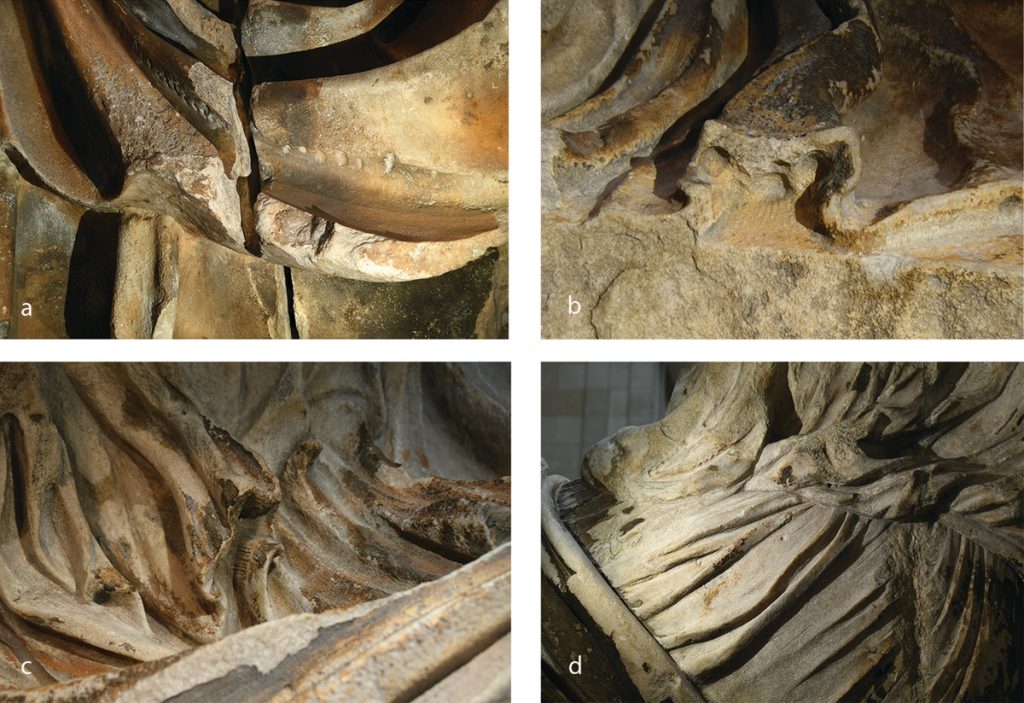
As Dr. Will Wootton, a renowned classical art and archaeology expert, suggests, the sculptures were conceived with their colorful finish in mind. This changes the narrative, positioning the ancient Greeks not as purists of white marble but as sophisticated artists who understood the emotive power of color. The lack of special surface preparation for paint application on the sculptures now appears not as an oversight but as a deliberate choice-emphasizing form and texture over additional color adhesion techniques.
A Technological Leap in Art History
The journey into the Parthenon sculptures’ polychromatic past isn’t merely a stroll through history; it’s a stride powered by modern technology. The visible-induced luminescence imaging that unveiled the remnants of color on these ancient statues represents a leap in art historical methodology. This non-invasive technique, pioneered by Dr. Giovanni Verri, delicately reveals the secrets of the past without endangering the integrity of these priceless artifacts.
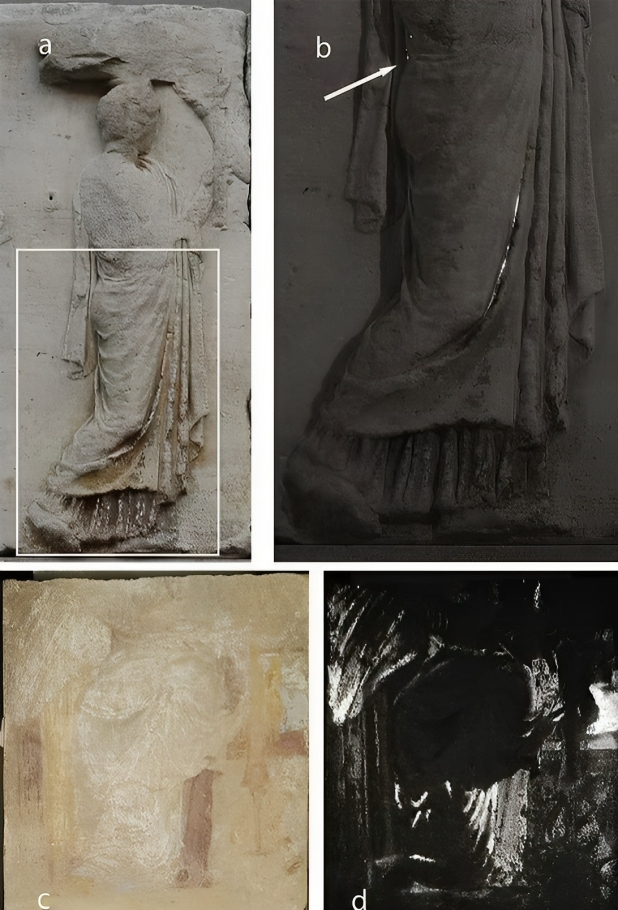
As you marvel at the nuances of the blue hues once gracing these sculptures, consider the meticulous care and innovative spirit that drive today’s researchers. Their work not only redefines our understanding of classical art but also bridges the gap between ancient craftsmanship and contemporary scientific exploration. Each microscopic trace of pigment found tells a story of ancient aesthetic decisions, cultural exchanges, and technological advancements.
Egyptian Blue: A Pigment Across Ages
Egyptian blue, the color of the heavens and the sea, was not a choice made lightly by the ancient Greeks. This pigment, with its roots in the art of a civilization as old as the pyramids, found its way onto the Parthenon sculptures, suggesting a shared artistic language that spanned across cultures. Composed of calcium, copper, and silicon, Egyptian blue was the cherished blue of the ancients, a synthetic marvel that connected Greece with the older traditions of Egypt.
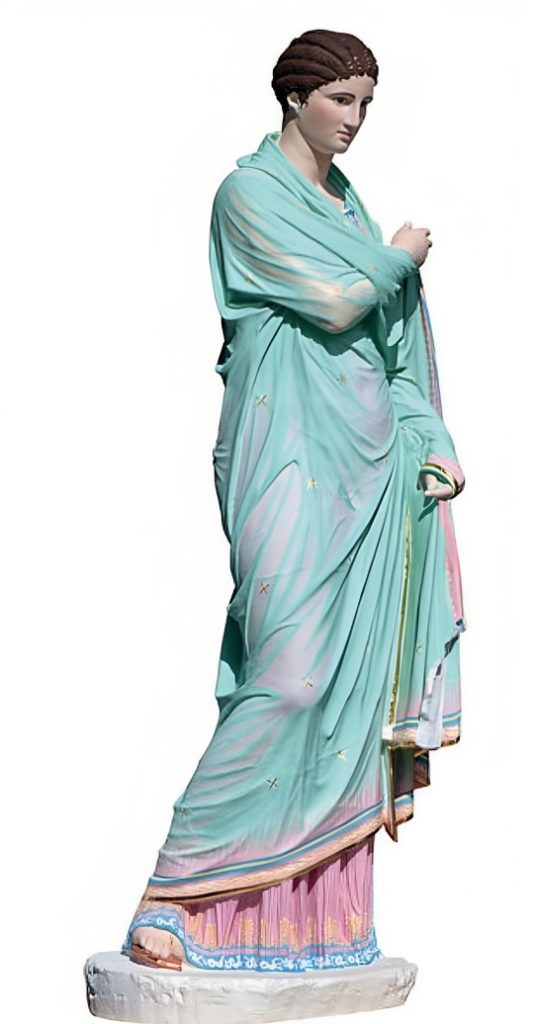
This pigment’s persistence on the sculptures today is a testament to the Greeks’ expertise in materials and their enduring appreciation for color’s symbolic power. Egyptian blue was not just a visual choice but a material connection to the divine and the eternal, a piece of the heavens that the Greeks brought down to Earth to honor their deities and decorate their most sacred spaces.
Beyond Egyptian Blue: A Spectrum Rediscovered
Yet, the story of color on the Parthenon sculptures does not end with the celestial blue. Researchers have found whispers of whites and purples, particularly significant given its historical value. True purple, often associated with royalty and divinity due to its rarity and cost, was typically derived from shellfish. However, the purple found on the Parthenon sculptures tells a different tale-one not of shellfish but of an alternative, yet to be fully understood, method of creation.

This discovery invites you to reimagine the statues not as monolithic symbols of a bygone era but as dynamic pieces of a larger narrative, rich in variety and complexity. The presence of these colors suggests that the ancient Greeks placed immense value on the visual impact of their work, an impact meant to be experienced in full color-a feast for the eyes of the ancient viewer.
The Value of Color in Ancient Times
In the ancient world, color was more than mere decoration; it was a language in itself, conveying status, beliefs, and even emotions. The use of vibrant colors on the Parthenon sculptures would have communicated messages of power, sanctity, and beauty to the ancient Athenians. This polychromatic approach was a deliberate and meaningful choice, reflecting the values and worldviews of the time.

To stand before the Parthenon in its original, colorful glory would have been an immersive experience, one where every shade and hue had its place in the visual symphony. The use of color was not merely aesthetic; it was an intrinsic part of the spiritual and cultural fabric of the city, embodying the vibrancy and complexity of Athenian society.
Challenging the Marble Canvas
The notion that the pure white of the marble was the final canvas is now challenged by the evidence of the sculptures’ polychrome finish. It appears the sculptors of the Parthenon were not merely chiseling into stone; they were setting the stage for a riot of colors. The very texture of the marble surfaces was chosen to mimic the materials they represented, such as woolen cloth or smooth skin, providing a versatile foundation for the rich pigments that would follow.
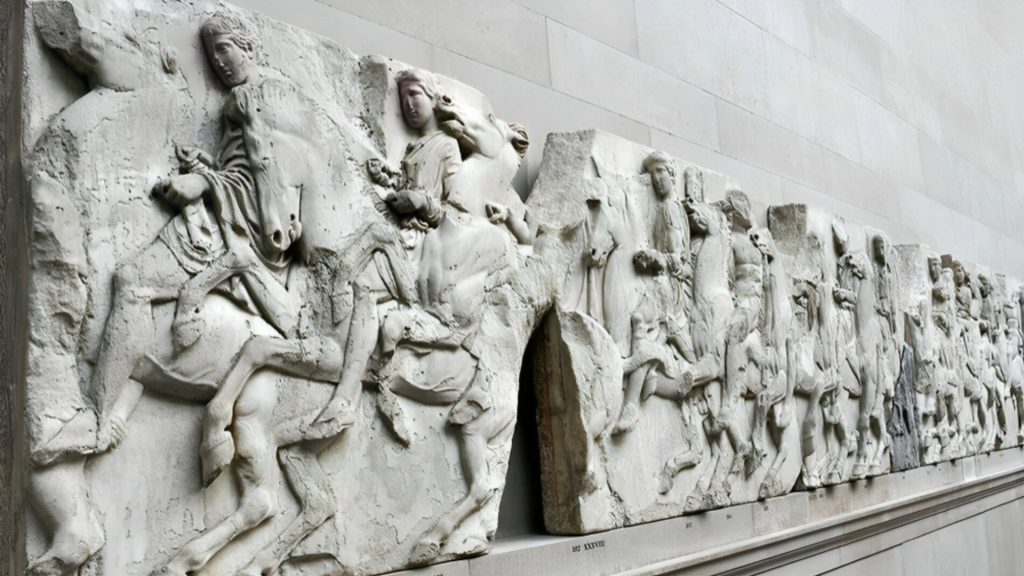
In this light, each sculpture emerges as a study in contrasts and complements, where the play of light and shadow was enhanced by the strategic application of color. This interplay was no accident; it was a calculated element of the sculpture’s design, intended to bring the figures to life under the bright Mediterranean sun.
The Artistic Process: Unity of Carving and Painting
The artistic process that birthed the Parthenon sculptures was a dance of disciplines, a union of carving and painting where one did not overshadow the other. The recent findings underscore that the sculptors and painters worked in concert, with the chisel setting the stage for the brush’s final act.
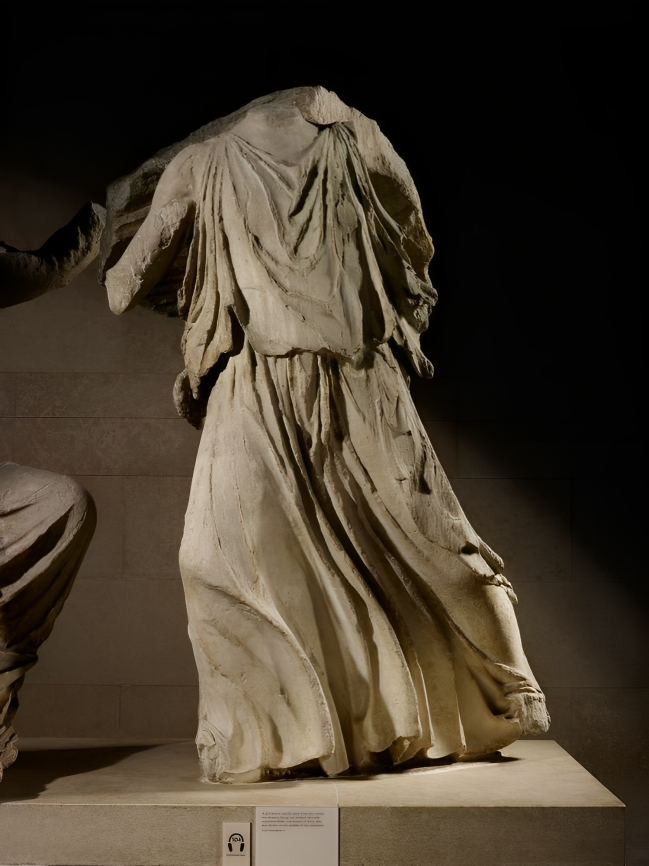
As you ponder the sculptures in their newfound polychrome reality, consider the hands that crafted and colored them. Each stroke, whether by chisel or brush, was guided by a vision of aesthetic harmony and storytelling-a vision that has withstood the test of time, even as the colors faded from view.
The Importance of Polychrome in Ancient Sculpture
The polychrome treatment of the Parthenon sculptures was not an afterthought but an integral part of their identity. This integration of color into sculpture challenges the long-held perception of ancient Greek art as an ode to the monochrome. The truth revealed by these hues is that the ancient Greeks experienced their craft as we do-a vibrant representation of life imbued with the colors of reality and imagination.
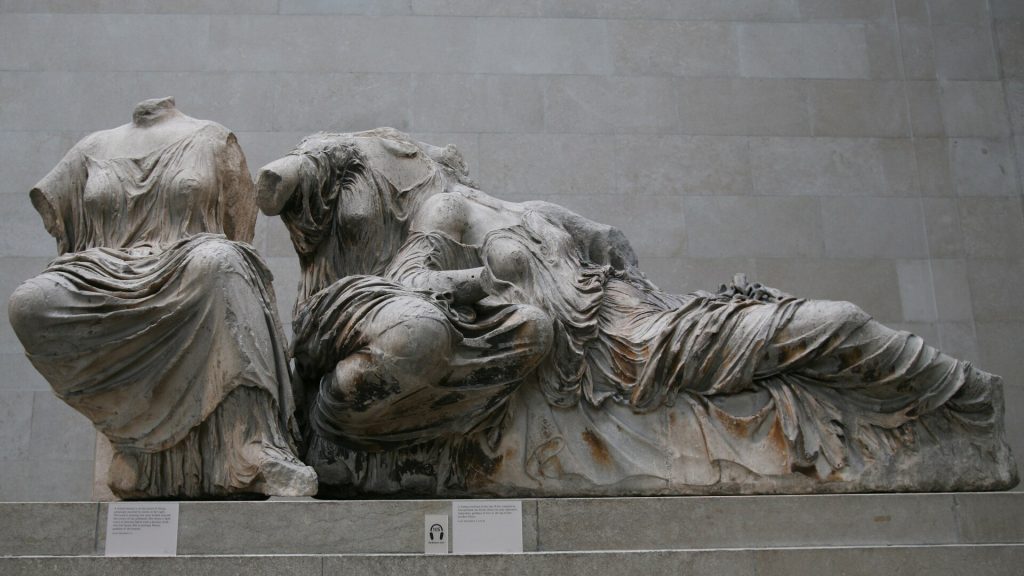
To the contemporary onlooker, the restored understanding of these colors resurrects the sculptures from the ashes of history, clothing them once again in the vibrancy they were meant to display. This realization does not tarnish the legacy of the Parthenon sculptures but enriches it, adding layers of cultural and historical depth nearly lost to the whitewashing of time.
An Elaborate Undertaking Than Ever Imagined
As this journey through the Parthenon sculptures’ true colors concludes, you’re invited to step away from the sterile gallery of the imagination where they have stood in monochromatic solitude. Step instead into the vivid world of the ancients, where art was a kaleidoscope of meaning and beauty.
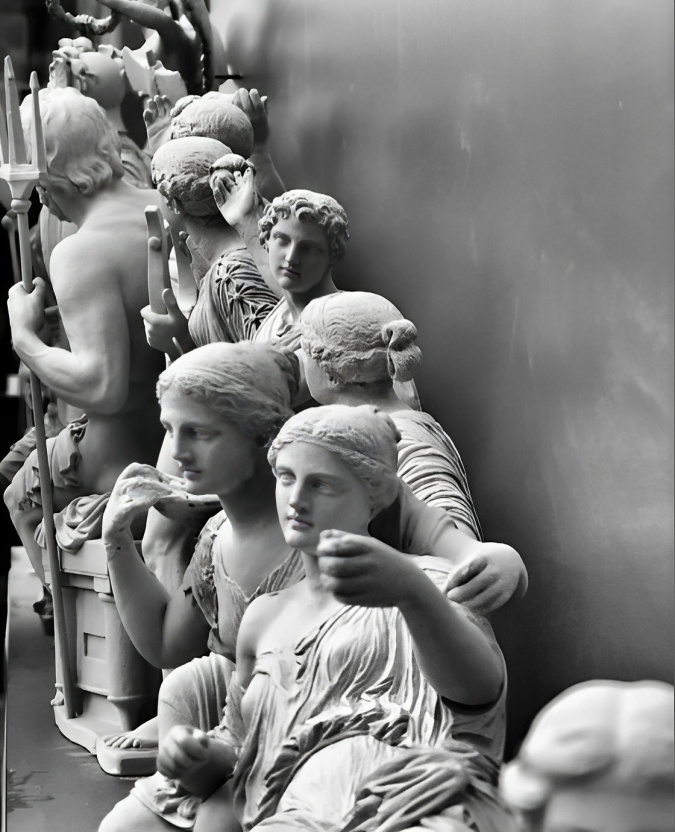
This revelation is not just an academic footnote; it’s a call to re-envision history with a broader palette, one that acknowledges the full spectrum of the past’s complexity. In recognizing the true colors of the Parthenon sculptures, we come closer to the humanity of the ancients, seeing their creations as they were meant to be seen-drenched in the colors of life, a testament to the enduring legacy of ancient artistry.

